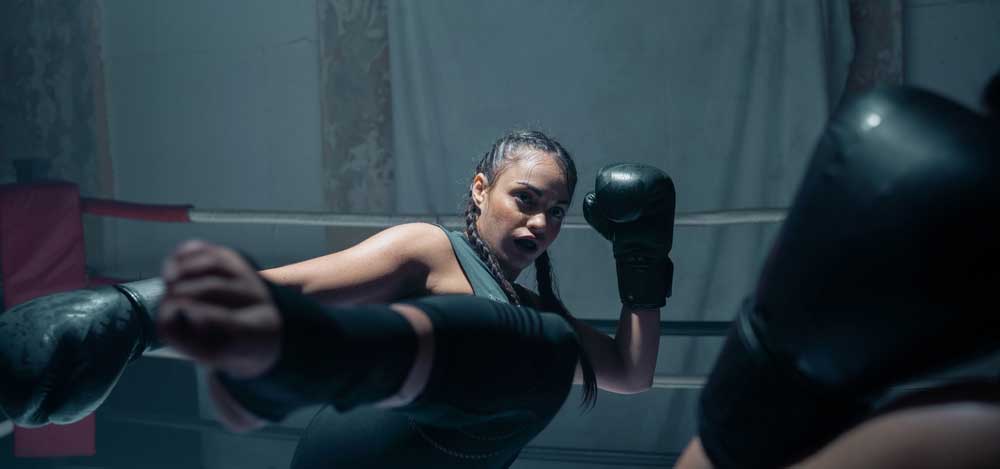The UFC features five distinct weight classes for women in Mixed Martial Arts. Each of these categories is led by dominant champions who set the standard in the sport, along with rising stars aiming to surpass them in future matches. As women’s participation in MMA grows, the significance of these weight divisions is increasingly highlighted.
And just like The UFC south of the border, Canada also has official weight classes for Canadian female fighters. Weight classes are necessary as they ensure all things are equal in the cage and that the determining factor for victory is the fighter’s skill more than anything else.
Keep reading to learn more about the 5 weight classes in Women’s Mixed Martial Arts.
WHAT ARE WEIGHT CLASSES?
MMA currently has various weight classes for fighters, which are a set of criteria fighters must meet. The upper weight in each category is the limit that the fight cannot exceed if they are to compete in that bracket. If they fail to “make weight,” they have 3 options:
1. Fight in a different weight class
2. Fight another opponent
3. Pick a weight class based on their athletic abilities at that weight
WHAT HAPPENS AT WEIGH-IN?
Weigh-in is typically scheduled close to fight night. A fighter must step on a scale where officials check to see if they are within the weight limits of their designated weight class. Professional fighters especially are under a lot of pressure during this time.
Why? Unlike amateur fights, pros cannot change weight classes if they don’t gain weight. So, failing here could more than likely result in forfeiting the fight or a percentage of their purse money made from it.
1. ATOMWEIGHT (105 LBS)
The atomweight division (which is also the minimum weight division) in women’s mixed martial arts refers to fighters weighing in at or below 105 lbs (or 48 kg). It claims the spot directly beneath the more hefty strawweight division. Moreover, it is also the lightest weight category that MMA recognizes.
The atomweight division is not clearly articulated in any of MMA’s Unified Rules. However, it is used almost entirely for women’s mixed martial arts, so it confidently retains its place within the sport’s competitive landscape.
2. WOMEN’S STRAWWEIGHT DIVISION (115 LBS)
The strawweight division retains a lower limit that bottoms out at 106 lbs (or 48 kg) and an upper limit that tops out at 115 lbs (or 52 kg). The present strawweight champion is Chinese MMA fighter Weili Zhang (also referred to as “Magnum”).
She crowned this title back in a 2019 fight against Jéssica Andrade and won it a second time after her second-round submission against fierce wrestler Carla Esparza in 2022.
3. WOMEN’S FLYWEIGHT DIVISION (125 LBS)
The lower limit for the Flyweight class for women’s MMA is a modest 116 lbs (or 53kg), and fighters cannot weigh less than 125 lbs (or 57 kg). Alexa Grasso is the current flyweight champion due to her win over long-time running champion Valentina Shevchenko twice last year.
4. WOMEN’S BANTAMWEIGHT DIVISION (135 LBS)
With a 9-pound range beginning at 126 lbs and going to 135 lbs, the Bantamweight division is where we come to some of the more well-known and prominent names in women’s mixed martial arts. Ronda Rousey, for example, is one of the most famous female MMA fighters of all time, touted as the uncontested champion within this division just a couple of short years ago.
However, very recently, Raquel Pennington won the vacant title after Amanda Nunes retired. Furthermore, Nunes is the first woman to retain the title of champion in numerous divisions; she is number one in the featherweight division.
5. WOMEN’S FEATHERWEIGHT DIVISION (145 LBS)
The featherweight division requires a 145-lb upper limit. As already stated, Amanda Nunes is the most popular name in women’s MMA and is also referred to as holding this prestigious title.
Join Western Canada’s First All-Women MMA Championship
With stiff competition and excellent fighters in the women’s mixed martial arts weight classes, it’s not hard to see why fans remain on pins & needles. The weight classes are a brilliant way to even the playing field for all fighters involved. As such, they are and will continue to be a way to organize events.
Pallas Athena Women’s Fighting Championship is the first all-women MMA corporation in Western Canada. We are set to become the number one all-women’s MMA league in North America.
As such, if you’re curious whether you have what it takes to join the ranks, be sure to fill out our fighter registration form today!


